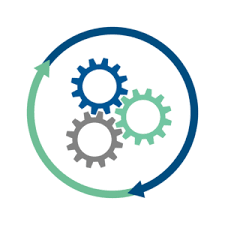Engineering Design
What is Engineering Design?
Engineering design refers to the method that engineers use to find the solution to an existing problem. The main goal of this process is to design a system or device that is useful and sought by society. It is similar to science inquiry, except for the fact that engineers use these design tools to modify the world for betterment. On the other hand, science inquiry uses these cognitive design tools to discover the rules that explain the world around us.
Attributes of Engineering Design
There are a lot of methods used for engineering design, but they all have some common attributes which are as follow
- Flexible Process
There is no hard and fast rule in engineering design methods. They are always flexible enough to work in any situation.
- Purposeful
The engineering design is always clear and purposeful. Before implementing any design, there is always an explicit goal that is kept in mind.
- Design under constraint
The design is always based on ground realities and limitations. The design contains maximum desired features keeping in mind the limitations that may include time, cost, and physical limitation of the equipment.
- Iterative
Most of the time, the design contains some steps that are repeated, like testing the product, then improving and repeating this cycle until you get the best possible outcome.
- Communication
Good communication is a key in engineering design because often, this process is done with small teams that are from different fields. Designers always have to be in touch with all the teams and clients to improve or design the final product.
Design Model
There are many design models used throughout the world. Here, we will discuss one of the most famous design models designed by the Massachusetts Department of Education. The design consists of 9 steps in a repeating loop.

Defining the Problem
The initial steps in engineering design is to define the problem. Your problem statement should be specific and should answer the following questions
- What is the problem?
- Who is facing this problem?
- Why is it necessary to solve it?
- Research
Before moving on any further, it is compulsory to conduct research around the problem. You may find some solutions to problems similar to the existing one. This can help you to build up a general structure for the final product. On top of that, you also learn from previous solutions and avoid mistakes that were made in the past.
- Requirements
Here you specify the requirements that you must meet in order to make your solution succeed. If you find any similar problem that is solved in the past, it can help you a lot in designing the requirement list for your solution. In the end, you write a design brief that contains all the key features and information for solving the problem.
- Brainstorm
The next step in engineering design is to brainstorm multiple solutions. In order to produce the best possible product, one should come up with as many solutions as possible, covering all the primary requirements of the solution declared in the previous step.
- Choosing the Best solution
After brainstorming and coming up with all the possible solutions, you compare all of the solutions and select the best option. Other than the solution requirements, there are many other limitations that you should consider before choosing the best solution. These limitations include time, cost, safety, and other resources. You need to perform a proper analysis to determine the best solution, and the decision matrix helps in performing the appropriate analysis to compare solutions.
- Development and design of the solution
In this step, the best-selected solution is refined, and the engineers produce the drawings or models of the solution. Based on this design or drawing, the solution is optimized further, keeping in mind the other limitations like cost, time, and other resources.
- Prototype
The prototype is the operating version of the refined solution on a much smaller scale. It helps the engineers to check for any potential threat with the minimum risk factor. The prototype is usually built with different materials and is not fully polished. They also help the designer to study how the final product will work on the ground under normal circumstances.
- Test and Redesign
In this step, you test the prototype and search for any potential problems in the solution. Once you find the problem, the solution is redesigned and rechecked. This step involves multiple iterations and tests before you settle on a final design.
- Communicate the Final design
After all the testing and redesigning the solution multiple times a final design is selected that is to be manufactured. The design is documented in a Final Report and presented to other units for manufacturing or support.
Why is it important?
Engineering design helps the user to apply the scientific principle and technical information to the mechanical structures or machines to help them function with maximum efficiency and an effective economy. While engineers provide the technical solution, the designers make sure that the product is eco-friendly, economical, and appealing to the users. Today, this design process is used by nearly all the industries to develop and optimize the solution. There are a lot of CAD and CDE software used by the engineers to help them in this designing process.
